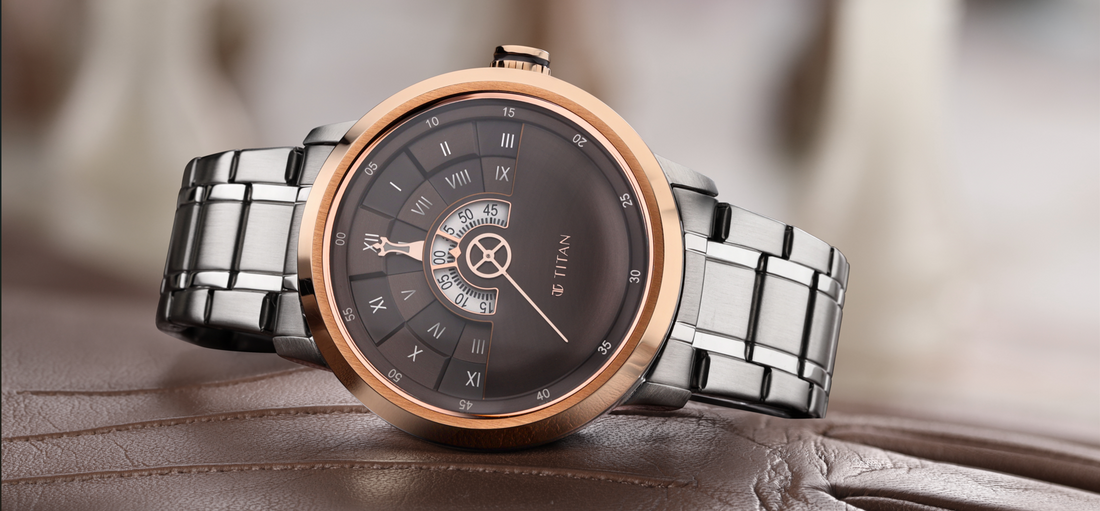Have you ever found yourself staring at a watch dial, feeling completely lost as to what all those numbers and markings mean? If so, you're not alone. Watch dials can be incredibly confusing for beginners, but fear not! In this beginner's guide, we will decode the mysteries of watch dials and help you understand how to read them like a pro. So grab your favorite timepiece and get ready to unlock the secrets of watch dials with us!
Introduction to Watch Dials: What are they and why do they matter?
When it comes to watches, the dial is often considered as the face of the timepiece. It is the part that most people notice first and is responsible for displaying essential information such as time, date, and other complications. But what exactly are watch dials? And why do they matter in a watch?
In simple terms, a watch dial is the flat or slightly curved surface of a watch where the hour markers, hands, and other indicators are located. The dial typically has different markings or numbers that represent hours, minutes, seconds, and sometimes even fractions of a second. In addition to telling time, some dials may also feature additional functions such as chronograph sub-dials or moon phase displays.
Watch dials come in various sizes, shapes, colors, materials and can be designed with different styles and themes depending on the manufacturer's preference. They play an important role in not only telling time but also adding character and personality to a watch.
One reason why watch dials matter is because they serve as a visual representation of a brand's identity. A well-designed dial can instantly make a statement about the brand's style and aesthetics.
Moreover, certain details on watch dials can also affect its functionality. For instance, luminescent coatings on hour markers or hands make them visible at night or in low-light conditions while anti-reflective coatings on sapphire crystals ensure better readability by reducing glare.
Another factor that makes watch dials crucial is their role in enhancing legibility. A carefully crafted dial with appropriate font size and contrast between markings ensures that time can be read easily at just a glance.
Since many people wear watches as accessories rather than just time-telling devices, dials play a significant role in determining the overall aesthetic appeal of a watch. A beautiful dial can make a watch stand out and become a conversation starter, making it more than just a functional accessory.
Watch dials are an essential component of any timepiece. They not only serve as the face of the watch but also play crucial roles in brand identity, functionality, legibility, and aesthetics. So next time you look at your watch, take a moment to appreciate its dial and all that it represents.
The Importance of Understanding Watch Dials
When it comes to watches, the dial is arguably the most important part. It is not only responsible for displaying the time, but also serves as a visual representation of the brand's style and craftsmanship. Therefore, understanding watch dials is crucial for any watch enthusiast or beginner looking to purchase their first timepiece.
The first thing to understand about watch dials is that they come in various shapes, sizes, and designs. The traditional round shape is the most common and classic style, while square or rectangular dials offer a more modern and edgy look. Other non-traditional shapes such as oval, tonneau, or even hexagonal can add a unique touch to a watch's appearance.
Moreover, watch dials are also available in different sizes ranging from small diameters of 32mm to larger ones of 46mm or more. Choosing the right size for your wrist is essential not only for comfort but also for aesthetic purposes. A too small dial on a large wrist may look out of place and vice versa.
Aside from the shape and size of dials, there are other important elements that make up this crucial part of a watch. One such element is the hour markers or indices which indicate the hours on an analog dial. These can be represented by numerals (Arabic or Roman), batons (long sticks), dots or diamonds depending on the design preference of the brand.
Another vital component found on most watch dials is the hands - long thin metal indicators that rotate around indicating minutes and hours. These can come in various styles such as arrow-shaped (often found on sports watches), sword-shaped (commonly seen on dress watches), dauphine (a mix between sword and pencil-shaped) and many others.
Furthermore, some brands incorporate additional features into their dials such as date windows located at either 3 o'clock or 6 o'clock position, sub-dials that display other functions (/V' for seconds, 'GMT' for dual time, 'Chronograph' for timing etc.), and even moon phase indicators. Understanding these features is crucial in determining the purpose and functionality of a watch.
The color and material used on watch dials also play a significant role in its overall appearance. White, black, silver, and blue are the most common colors used, but some brands offer more unique options such as green, red or even mother of pearl. As for materials, dials can be made from various metals such as stainless steel or gold or even precious stones like diamonds.
Understanding watch dials goes beyond simply telling time. It involves an appreciation of design elements and knowing how they contribute to a watch's overall aesthetic appeal. By paying attention to shape, size, markers, hands, additional features and materials when choosing a timepiece, one can truly appreciate the significance of this essential part of any watch.






